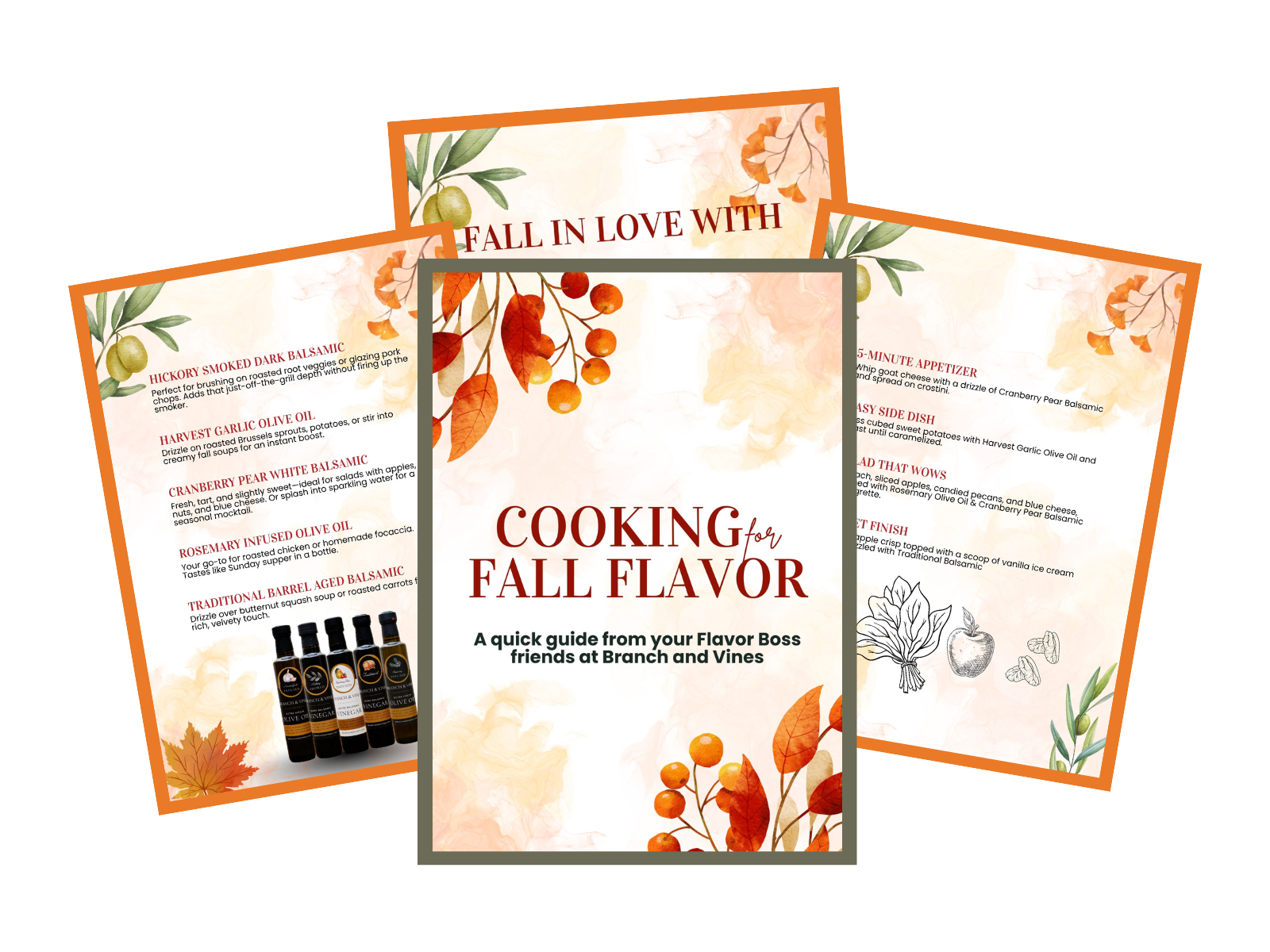Olive Oil 101: Cooking vs. Finishing Oils Explained
Oct 03, 2025
Not All Olive Oils Are Created Equal ... and That’s a Good Thing
Olive oil isn’t one-size-fits-all. Just like you wouldn’t sip a bold espresso when you need a soothing chamomile tea, not every olive oil works the same way in your kitchen. Some shine when heated, while others sing when drizzled at the very end. Understanding the difference between cooking oils and finishing oils is the first step toward bringing confidence ... and a burst of seasonal flavor ... to your cooking.

What Is a Cooking Oil?
Cooking oils are the workhorses of your kitchen. These are heat-stable oils that can handle the sizzle of your pan, the heat of your oven, or even a quick sear on your grill. They’re typically milder in flavor, which makes them versatile for everyday dishes.
Think of cooking oils as the foundation... the background note that supports the rest of your ingredients without overwhelming them. For example:
- Sautéing onions and peppers in Arbequina olive oil.
- Roasting root vegetables until caramelized and sweet.
- Pan-searing chicken breasts to golden perfection.
When in doubt, grab a heat-friendly olive oil for anything that cooks at medium to high temperatures.
What Is a Finishing Oil?
Finishing oils, on the other hand, are the splash of magic at the end. They’re often more delicate, packed with nuanced aromas and flavors that would be lost if heated too much.
Rather than cooking with them, you drizzle them over dishes once they’re plated. The result? A dish that feels elevated ... restaurant-quality with almost no extra effort.
Picture these moments:
- A peppery drizzle over a creamy butternut squash soup.
- A grassy, green note splashed over fresh bruschetta.
- Herb-infused olive oil dancing over warm focaccia.
Finishing oils don’t just add flavor... they add experience.
Cooking Oil vs. Finishing Oil: Quick Rule of Thumb
Here’s a simple way to remember which oil to reach for:
|
Type |
When to Use |
Examples |
|
Cooking Oils |
Heat-friendly, sautéing, roasting, frying |
Arbequina, mild blends |
|
Finishing Oils |
Drizzling, dipping, plating |
Tuscan Herb, Garlic, Lemon, robust varietals |
If the dish spends time over high heat, use a cooking oil. If it’s about flavor at the finish line, grab your finishing oil.
Everyday Examples: From Pan to Plate
To put this into perspective, imagine you’re making roasted fall veggies. You’d:
- Toss them in a cooking oil before roasting...this helps them caramelize without smoking.
- Once they’re out of the oven, drizzle with a finishing oil like Tuscan Herb to instantly elevate the flavor.
Same goes for soups, pasta, or even bread. The cooking oil does the work, and the finishing oil does the show-stopping finale.
Your Fall Flavor Cheat Sheet
Mastering the balance of cooking vs. finishing oils is the secret to confident, flavorful meals. But don’t worry…you don’t need to memorize it all.
👉 Want to keep this handy? Download our Cooking with Fall Flavor Guide and always know which oil to reach for.





